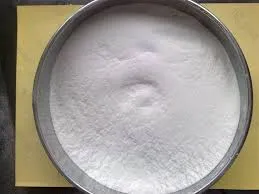
Nov . 18, 2024 05:29 Back to list
hydroxyethyl cellulose viscosity
Understanding Hydroxyethyl Cellulose Viscosity
Hydroxyethyl cellulose (HEC) is a water-soluble polymer derived from cellulose, a natural polymer that makes up the cell walls of plants. HEC is widely utilized in various industries due to its unique properties, particularly its viscosity characteristics. Viscosity is a critical parameter that affects the performance of HEC in applications ranging from pharmaceuticals to cosmetics and construction materials. Understanding how viscosity is influenced by different factors is essential for optimizing the use of HEC in specific applications.
The Importance of Viscosity in Hydroxyethyl Cellulose Applications
Viscosity refers to the resistance of a fluid to flow. In the context of HEC, its viscosity plays a pivotal role in determining how it behaves in solution. Higher viscosity solutions can improve the stability and texture of products, making HEC an indispensable ingredient in formulations like adhesives, paints, and personal care products.
For instance, in the pharmaceutical industry, HEC is often used as a thickening agent in liquid formulations. The viscosity of HEC solutions can significantly affect drug delivery, as it influences the rate at which the drug is released. Similarly, in the cosmetic industry, the viscosity of HEC impacts the spreadability and feel of lotions and creams on the skin. Therefore, a thorough understanding of the viscosity properties of HEC can help formulators create products that meet specific performance criteria.
Factors Influencing HEC Viscosity
Several factors influence the viscosity of hydroxyethyl cellulose solutions. One of the primary factors is the concentration of HEC in the solution. As the concentration of HEC increases, the viscosity of the solution generally rises. This is due to the increased interaction between the HEC molecules, leading to a thicker, more gel-like consistency.
Temperature also plays a significant role in determining viscosity. Typically, as temperature increases, the viscosity of HEC solutions decreases. This phenomenon is crucial in applications where heat is involved, as it allows for easier manipulation of the product during processing. Conversely, cooling the solution typically results in an increase in viscosity, which is desirable in certain applications where a thicker product is needed.
hydroxyethyl cellulose viscosity

The molecular weight of HEC is another important factor that affects viscosity. Higher molecular weight HEC generally results in higher viscosity solutions. This is because larger molecules have greater chain entanglement, which impedes flow and increases resistance. When selecting HEC for a particular application, understanding the desired viscosity and correlating it with the molecular weight is essential.
Measuring Viscosity
Viscosity can be measured using various methods, including rotational viscometers, capillary viscometers, and cone-and-plate viscometers. These instruments provide quantitative data that can help researchers and formulators understand the flow behavior of HEC solutions under different conditions.
When measuring viscosity, it is crucial to consider both shear rate and shear stress, as these parameters can significantly influence viscosity readings. For instance, HEC solutions exhibit pseudoplastic behavior, meaning their viscosity decreases with increasing shear stress. This property is beneficial in applications such as paints and coatings, where smooth application is desired.
Conclusion
Hydroxyethyl cellulose is an incredibly versatile polymer with a wide range of applications across multiple industries. Understanding the factors that influence its viscosity is crucial for formulating effective products. By considering elements such as concentration, temperature, molecular weight, and measurement techniques, manufacturers can optimize HEC incorporation into their formulations, ultimately improving product performance.
As research continues and new applications are discovered, the role of HEC and its viscosity characteristics will likely expand, making it an essential component in innovative formulations. Whether in pharmaceuticals, personal care, or construction, hydroxyethyl cellulose remains a key player in enhancing the functionality and effectiveness of countless products. Understanding its viscosity will empower formulators to push the boundaries of what is possible with this remarkable polymer.
-
Unlocking the Benefits of HPMC Products: A Gateway to Versatile Applications
NewsAug.07,2025
-
Unleashing the Potential of HPMC Ashland: A Comprehensive Look
NewsAug.07,2025
-
Tile Bonding Cellulose: The Key to Superior Adhesion and Durability
NewsAug.07,2025
-
Hydroxypropyl Methylcellulose Powder: The Versatile Component in Modern Pharmaceuticals
NewsAug.07,2025
-
Hydroxyethyl Cellulose: The Versatile Solution for Various Industries
NewsAug.07,2025
-
Hydroxyethyl Cellulose (HEC): The Versatile Polymer for Various Applications
NewsAug.07,2025







